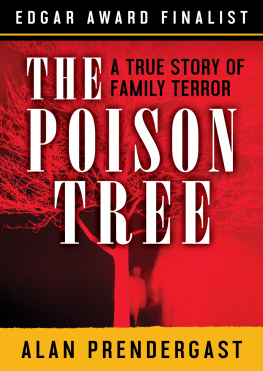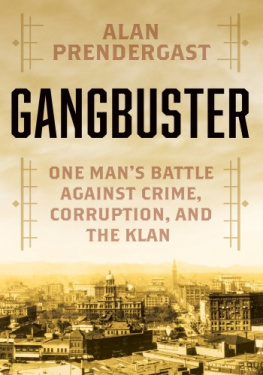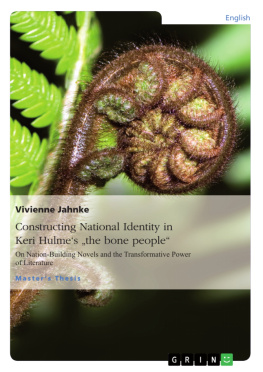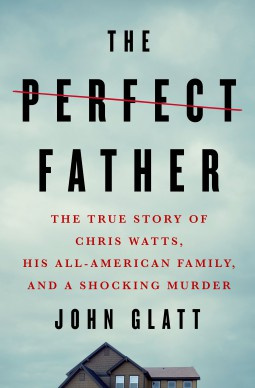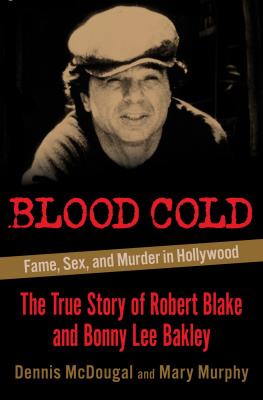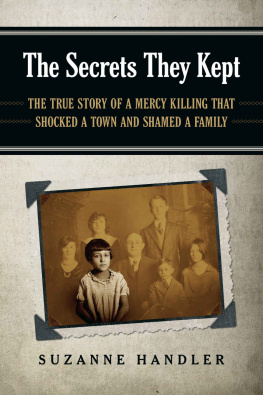The Poison Tree
A True Story of Family Terror
Alan Prendergast

TO MY PARENTS
E DMUND AND Y VONNE
who knew another way
PART ONE
THE HOUSE ON COWPOKE ROAD
As a little childe riding behind his father, sayde simply unto him, Father, when you are dead, I shal ride in the Saddle.
STEFANO GUAZZO ,
Civile Conversation
A POISON TREE
I was angry with my friend:
I told my wrath, my wrath did end.
I was angry with my foe:
I told it not, my wrath did grow.
And I waterd it in fears,
Night & morning with my tears:
And I sunned it with smiles,
And with soft deceitful wiles.
And it grew both day and night,
Till it bore an apple bright.
And my foe beheld it shine,
And he knew that it was mine.
And into my garden stole,
When the night had veild the pole;
In the morning glad I see,
My foe outstretchd beneath the tree.
WILLIAM BLAKE,
Songs of Experience
The city of Cheyenne stands on the high, windswept plains of southeastern Wyoming, at the junction of two interstate highways. Half an hours drive from Nebraska and Colorado, it is a crossroads town, an outpost on the edge of vast and sparsely settled countrya web of railroad yards, motels, gas stations, fast-food franchises, state and federal offices, and military barracks.
Although it has been the state capital for almost a century, Cheyenne doesnt fit in with the popular image of Wyoming. The fabled land of Old Faithful, black bears, and Marlboro men working horseback beneath purple mountains majestywhat locals still call the real Westlies hundreds of miles northwest. Cheyenne represents another side of Wyoming. The city was created out of the white mans need for a cheap stopover on the way to somewhere else, and that fact has colored much of its history. It is an encampment of fifty thousand people but home to very few. Many of its citizens are bureaucrats, blue-collar transients, upwardly mobile Midwesterners, or young families stationed at Warren Air Force Base, waiting for the next promotion, transfer, new job: a way out. Until something better comes along, they end each day in the shadow of the real Westalong with the traveling salesmen, the truckers disengaged for the night, and the sons of the pioneersall huddled together in a ring of bright lights against the encompassing darkness of the Great Plains.
In recent years, development in Cheyenne has marched north. Five miles north of downtown, outside the city limits but within the confines of Laramie County, several dozen houses are scattered along the rolling hills of sagebrush and prairie grass. The settlement is known as Cowboy Country. In the language of realtors, Cowboy Country is not a suburb but a rural subdivision, a place for people who want to live out in the country but not too far from the comforts of town. The moderately expensive brick houses sit on two- to four-acre lots in splendid solitude. The more desirable properties hug the bare hillsides like upper-class bunkers, sheltered from the hammering wind and out of sight of one another. The view is one of empty skies and endless prairie.
Looking out upon a treeless hump of sagebrush every day, it is easy to pretend that you are alone here, that your neighbors dont exist, that Cheyenne itself has disappeared. The illusion can be particularly strong at night, when the streets that wind through Cowboy Countryunpaved, unlit roads with names like Lariat Loop, Bronco Trail, and Cowpoke Roadvanish into the hollow blackness of the prairie. At night the great out there closes in on you, and it is possible to feel trapped in the so-called wide open spaces of the real West.
It is even possible to feel that you have been imprisoned at the very edge of the world.
Snow came early to Cheyenne in the fall of 1982. It was nothing like the ferocious blizzards that routinely sweep across southern Wyoming in late winter and early spring, closing 1-80 and confounding the schedules of long-haul truckers. Still, the light dusting every few days muddied the streets and made the locals grateful for the sporadic sunshine. By the middle of November several inches of fresh snow covered the surrounding plains, and the persistent wind raised wisps of powder on the hilltops, like swirling jinn dancing on the bleached dunes of the Great American Desert.
The season encouraged early rising and quick action, for the days were getting shorter. November 16, a Tuesday, dawned brisk and clear, but morning sank quickly into afternoon, and the sun disappeared completely before five oclock. Within minutes of its fall the temperature plunged below freezing, and a cold, crisp, moonless night gripped the prairie.
It was one of the blackest nights of the year. Cowboy Country was swathed in darknessall except for one solitary strip of Cowpoke Road, where, shortly after sunset, one house was ablaze with lights from one end to the other.
The house was a spacious one-story of pale red brick, with white trim, white shutters, and a white four-poster facade, a vaguely neocolonial style popular in Cheyenne. There was one just like it, only bigger, up the road two hundred yards. A steep ridge behind the house hid the larger model and the rest of its neighbors from view. One of the last addresses to be erected on Cowpoke, one of the last to be sold, the house cast its light forlornly on the deserted hills around it.
On the east side of the house was an attached, two-car garage and a concrete driveway that sloped downward thirty feet to a wash of gravel that led to the road. Like the house, the driveway was flooded with light. Only two areas of the house remained dark: the garage itself and a large room on the south side, adjacent to the front entrance.
Deborah Jahnke paced distractedly in the darkened front room, returning every few moments to the window to gaze out upon the empty road. When she stood still her fingers flew up to her temples and brushed her hair back over and over, until she felt the need to pace again.
She was seventeen years old but struck some people as much younger. This was partly because of her sizeshe was two inches over five feet tall, with spindly arms and small handsand partly a matter of her fidgetiness, her thick, unruly shock of brown hair, and the girlish clothes she sometimes wore; all of which gave her the aspect of a street urchin in a Truffaut movie. To others, though, she seemed much older than seventeen. Her figure was petite but well defined; her large, somber green eyes roamed everywhere in conversation and seemed to miss nothing; and there was a strained quality to her incessant talk, a forced cheerfulness in her manner, that suggested she carried with her the half-submerged troubles and anxieties of a much older woman.
Tonight Deborah was having difficulty persuading herself to leave the living room. Living room! The name was a joke. No one lived there, really, just as no one did family-type things in the family room, and no one ever came in through the front door of the house. No one even went into the living room. There was no reason to, nothing there. When they moved in they didnt have enough furniture to fill this huge, stark, homely place; so sorry, kids, no living room. The room was dark and empty, and maybe that was why she felt safe and didnt want to come out, even though Richard had told her to stay away from there.

